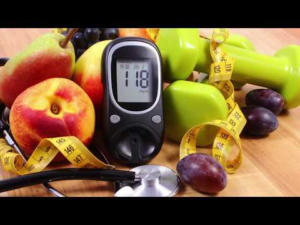
Visit http://www.leehealth.org/?utm_source=… or follow us on social media!
Instagram 📷: bit.ly/2HxJ81v
Facebook📱: bit.ly/2IZlhtr
Twitter 🐦: bit.ly/2HxJ81v
Lee Health is a nationally recognized, award-winning health system in Southwest Florida. We are caring people, inspiring health.
It’s a growing health concern. Studies show more than three million people are living with type 2 diabetes. Teresa Spano, a naturopathic consultant with Lee Health, says what you eat, when you eat, and how you feel after you eat, can all help determine if you’re living with pre-diabetes. “Pre-diabetes is more referring to when your fasting glucose levels are going up, usually you can see the hemoglobin A1C that is starting to climb, it’s not necessarily in the diabetic range but it’s getting there.”
Discussing a patient’s sleep patterns, exercise, and diet can help determine if they’re at risk for developing diabetes. “There is a lot of gray area in between completely normal and actually being diabetic, which is where the pre-diabetic range is really where you can help people so much before they actually get to full blown diabetes,” said Spano.
Health experts may also use the waist to hip ratio to determine if patients are at risk. This ratio look at how the patient is carrying their weight: in their belly or in their hips and thighs? If patients have more belly fat, they are at a higher risk of developing type 2 diabetes. “A lot of people just don’t really know that they are creeping up towards that, which is probably the scariest thing about it,” said Spano.
Experts encourage healthy diets of fruit, vegetables, and fiber, and limiting animal protein. “Exercise is so important when it comes to preventing diabetes. Sleep is always important as well, stress reduction. It’s really the core for everything you hear for staying healthy,” said Spano.
A blood test to check a patient’s A1C, triglyceride levels, and cholesterol can ultimately decide if a patient is at risk for type 2 diabetes.
